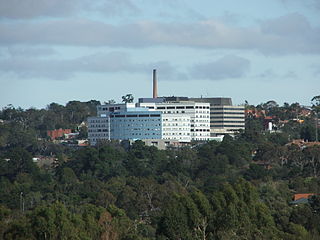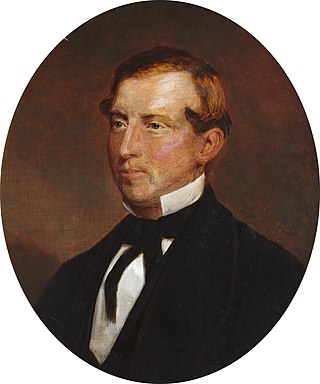Related Research Articles

Plastic surgery is a surgical specialty involving the restoration, reconstruction or alteration of the human body. It can be divided into two main categories: reconstructive surgery and cosmetic surgery. Reconstructive surgery includes craniofacial surgery, hand surgery, microsurgery, and the treatment of burns. While reconstructive surgery aims to reconstruct a part of the body or improve its functioning, cosmetic surgery aims to improve the appearance of it. A comprehensive definition of plastic surgery has never been established, because it has no distinct anatomical object and thus overlaps with practically all other surgical specialties. An essential feature of plastic surgery is that it involves the treatment of conditions that require or may require tissue relocation skills.

Sir Archibald Hector McIndoe was a New Zealand plastic surgeon who worked for the Royal Air Force during the Second World War. He improved the treatment and rehabilitation of badly burned aircrew.

Podiatry, or podiatric medicine and surgery, is a branch of medicine devoted to the study, diagnosis, and treatment of disorders of the foot, ankle and lower limb. The healthcare professional is known as a podiatrist. The US podiatric medical school curriculum includes lower extremity anatomy, general human anatomy, physiology, general medicine, physical assessment, biochemistry, neurobiology, pathophysiology, genetics and embryology, microbiology, histology, pharmacology, women's health, physical rehabilitation, sports medicine, research, ethics and jurisprudence, biomechanics, general principles of orthopedic surgery, plastic surgery, and foot and ankle surgery.

The Austin Hospital is a public teaching hospital in Melbourne's north-eastern suburb of Heidelberg, and is administered by Austin Health, along with the Heidelberg Repatriation Hospital and the Royal Talbot Rehabilitation Centre.

The flexor retinaculum is a fibrous band on the palmar side of the hand near the wrist. It arches over the carpal bones of the hands, covering them and forming the carpal tunnel.

The Royal Australasian College of Surgeons (RACS) is the leading advocate for surgical standards, professionalism and surgical education in Australia and New Zealand.

In modern medicine, a surgeon is a medical doctor who performs surgery. Although there are different traditions in different times and places, a modern surgeon is also a licensed physician or received the same medical training as physicians before specializing in surgery.
William Henry Battle was an English surgeon and teacher.
Raman Malhotra is a British ophthalmologist and oculoplastic surgeon. He is a consultant ophthalmic surgeon and head of the Corneoplastic unit, Queen Victoria Hospital, East Grinstead.

Carpal tunnel surgery, also called carpal tunnel release (CTR) and carpal tunnel decompression surgery, is a nerve decompression in which the transverse carpal ligament is divided. It is a surgical treatment for carpal tunnel syndrome (CTS) and recommended when there is constant (not just intermittent) numbness, muscle weakness, or atrophy, and when night-splinting no longer controls intermittent symptoms of pain in the carpal tunnel. In general, milder cases can be controlled for months to years, but severe cases are unrelenting symptomatically and are likely to result in surgical treatment. Approximately 500,000 surgical procedures are performed each year, and the economic impact of this condition is estimated to exceed $2 billion annually.

George Hogarth Pringle was a Scottish-Australian surgeon. He qualified in medicine from Edinburgh, Scotland and then worked in the Royal Infirmary of Edinburgh along with the young Joseph Lister with whom he continued to correspond. He settled in Parramatta, New South Wales, Australia and is credited with introducing Listerian antisepsis into Australia.

Brigadier Robert Neville Atkinson,, FAMA is an Australian orthopaedic surgeon and retired senior officer of the Royal Australian Army Medical Corps, best known for his contributions to trauma and military surgery.

Sir Thomas Peel Dunhill was an Australian thyroid surgeon and honorary surgeon to the monarchs of the United Kingdom.
Susan Josephine Neuhaus is an Australian general surgeon and surgical oncologist with specialty interests in melanoma and sarcoma surgery. Neuhaus was one of three finalists for the South Australian nomination for Australian of the Year in 2012.

Prudence Barron MBE FRCSE was a British surgeon at the Royal Hospital for Sick Children, Edinburgh and geriatrician.

Mary Evelyn Lentaigne is a British former medical artist and Red Cross Voluntary Aid Detachment nurse who worked at the Queen Victoria Hospital, England, during the Second World War. She is known for the drawings she made there of the surgical procedures of New Zealand plastic surgeon Archibald McIndoe who was working on injured servicemen. Around 300 of her drawings are held by the East Grinstead Museum where they form the Mollie Lentaigne Collection.
Andrew Russell Murray FRCSEd was an Australian orthopaedic surgeon who pioneered developments in hand surgery while working at Leith Hospital, Scotland. These included pollicisation, the use of stainless steel joint prostheses to replace finger joints and the use of wire to stabilise finger fractures and bone grafts. He later worked as an orthopaedic surgeon in Brisbane, Australia. On 1 December 1955 he was shot dead by Karl Kast in the "Brisbane medical massacre".
Bernard McCarthy O'Brien was an Australian microsurgeon who was considered a pioneer in his field.
Ian Fraser Muir was an English plastic surgeon at the West Middlesex Hospital and Mount Vernon Centre for Plastic Surgery. While working there he developed what became known as the 'Muir and Barclay formula' which estimates the volume of fluid replacement required in the initial resuscitation after major burns. In 1969, he relocated to Aberdeen to set up the plastic surgery and burns unit, having been appointed plastic surgeon and senior lecturer in Surgery at the University of Aberdeen. He was elected president of the British Association of Plastic Surgeons

Jean Littlejohn was an Australian surgeon, early practitioner of the developing field of otorhinolaryngology, and pioneer of deafness research. She joined the Royal Victorian Eye and Ear Hospital in Melbourne, Australia and maintained a long association with the hospital until her retirement in 1974.
References
- ↑ Surgeons (RACS), Royal Australasian College of. "Lena McEwan". www.surgeons.org. Retrieved 15 January 2019.
- ↑ McEwan, Lena E. (1962). "Median and Ulnar Nerve Injuries". Australian and New Zealand Journal of Surgery. 32 (2): 89–104. doi:10.1111/j.1445-2197.1962.tb03012.x. ISSN 1445-2197.
- ↑ "Sex Reassignment Surgery". www.oocities.org. Retrieved 15 January 2019.